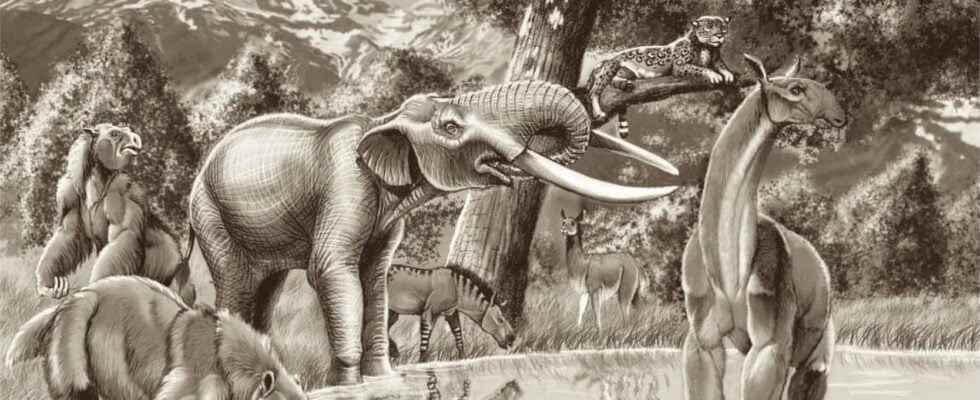35,000 years ago, the proboscideans Notiomastodon platensis populated South America. The removal of ancient DNA from a molar of one of the representatives of this species makes it possible to determine whether this species was phylogenetically closer to elephants than to mastodons.
You will also be interested
[EN VIDÉO] The mystery of the fourth mammoth is finally cleared up In 150 years, only four mammoths have been discovered in France. Unearthed in Changis-sur-Marne, this specimen is particularly well preserved. This astonishing documentary by Inrap (National Institute for Preventive Archaeological Research) tells of a meticulous investigation to understand what happened to this animal.
Proboscideans are mammals which emerged 60 million years ago in Africa and which include current and extinct species and most of which have an upper lip modified into a prehensile proboscis. They include in particular the Deinotheriidae, the Mammutidae and the Elephantidae. The Gomphotheriidae are a family of proboscideans all of whose representatives are now extinct but which once populated South America.
The position phylogenetic of this taxon within proboscideans has been modified several times over the course of studies depending on the biological material available. While the conclusions of these studies are mainly based on morphological comparisons between specimens, some have also been established usingDNA former of Gomphotheriidae. These results are nevertheless difficult to obtain due to the poor preservation of this molecule in regions with hot and humid climates.
Notiomastodon : closer to elephants or mastodons?
Among these Gomphotheriidae having populated South America, is the species endemic Notiomastodon platensis and why this species did not colonize Central and North America remains a mystery. Morphological analyzes generally showed that N.platensis would be phylogenetically closer to Elephantidae only Mammutidae, while the analysis of proteins contained in the collagen bone of this species suggested otherwise.
The ancient DNA of N.platensis was taken from the first upper molar of a fossil dating from 35,000 years ago
In order to determine which of these two hypotheses is more probable, an international team of researchers carried out a phylogenetic analysis using DNA from N.platensis and seven others proboscideans. The ancient DNA of N.platensis was taken from the first molar higher than one fossil dating from 35,000 years ago which was found at the Uruguayan site of Arroyo of the Vizcaino. The analyzes also include other molecular and morphological data within the proboscideans. The results of this study were published in the newspaper iScience.
DNA analysis shows that Notiomastodon is a sister taxon to Elephantidae, as had been suggested by previous morphological analyses. The authors further explain that the common ancestor of Notiomastodon and Elephantidae dates from a little over 10 million years ago. The cause of the disappearance of Notiomastodon less than 10,000 years ago is still uncertain today, but several non-exclusive hypotheses have been proposed on this subject. They imply a modification of the climate at the end of the last ice age as well as a pressure predation by humans.
Interested in what you just read?
